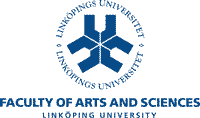
|
Visa svensk kursplan |
|
COURSE CATEGORY Master´s programme in Science Sustainable Development MAIN FIELD OF STUDY Miljövetenskap - MXA SUBJECT AREA |
COURSE CODE | 746A14 |
- Name and explain basic geographical and geoinformatical concepts
- Describe the spatial data structures and algorithms used in GIS-analysis
- Critically assess advantages and disadvantages of various GIS-analysis methods for a given problem
- Choose and apply an appropriate analysis technique given a particular GIS-problem
- Describe and use available functions of GIS software
- Present and reason about your results verbally and in written form.
The course covers theoretical concepts (maps, digital map construction, methods to capture data and GIS-based analysis techniques) as well as exercises to gain practical experience of the theoretical concepts.
Students failing an exam covering either the entire course or part of the course two times are entitled to have a new examiner appointed for the reexamination.
Students who have passed an examination may not retake it in order to improve their grades.
Applicants must hold a bachelor's degree/kandidatexamen (equivalent for example a professional degree) of at least 180 ECTS credits, including a 15 ECTS credit degree paper or equivalent. All applicants must show in-depth studies for at least one year in a field relevant for the course such as anvironmental science, water resources, geography, economics, social anthropology, political science, hydrology, engineering, chemistry, history and biology or equivalent.
Documented knowledge of English equivalent to "Engelska B"; i.e. English as native language or an internationally recognized test, e.g. TOEFL (minimum scores: Paperbased 550 + TWE-score 4.0, computorbased 213 and internetbased 79), IELTS, academic (minimum score: Overall band 6.0 and no band under 5.0), or equivalent.
The course is carried out in such a way that both men´s and women´s experience and knowledge is made visible and developed.
|
||||||||||||||||||||||||||||||||||||||||||||||||||||||||||||||||||||||||||||||